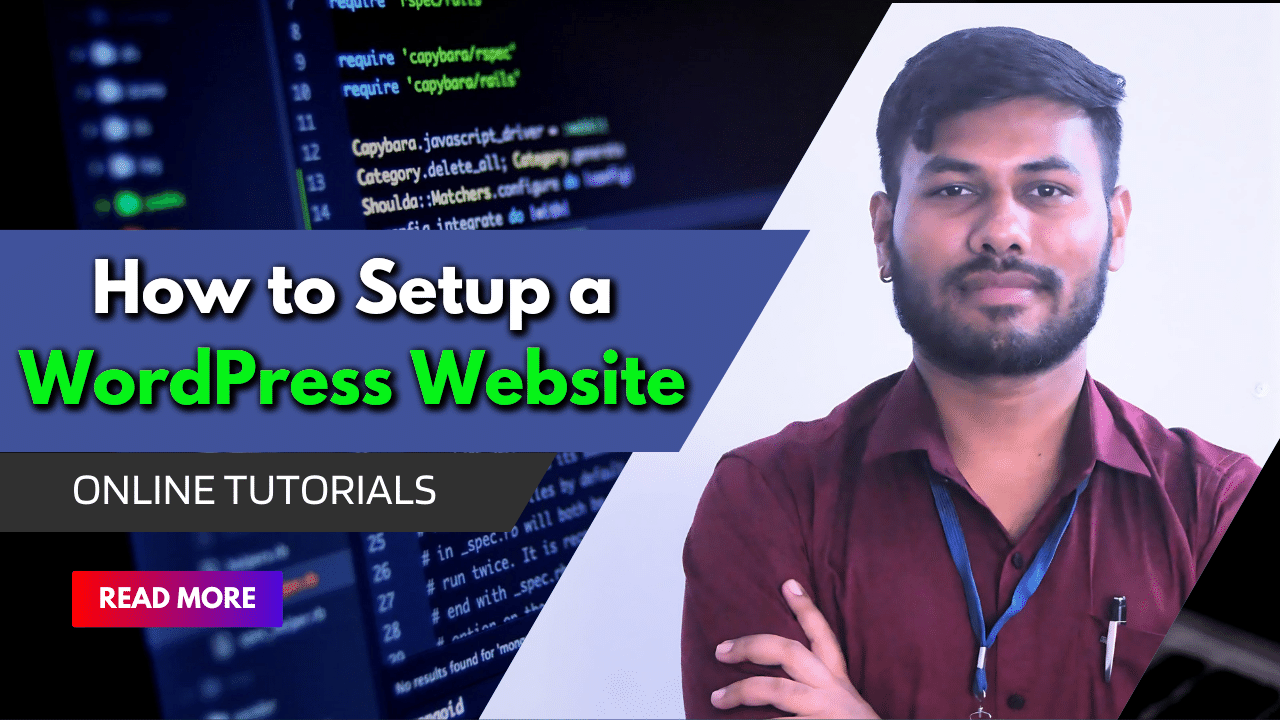How to Setup a WordPress Website
Setting up a wordpress website can seem daunting, but with the right guidance, it’s a straightforward process. WordPress is one of the most popular website-building platforms, known for its flexibility and ease of use. Whether you’re starting a blog, an online store, or a business website, this guide will walk you through each step in detail.
Step 1: Choose a Domain Name and Web Hosting 🌐
1.1 Choose a Domain Name
Your domain name is your website’s address on the internet. Here are some tips for choosing a domain name:
- Brainstorm: Think of a unique and relevant name for your website. It should be easy to remember and reflect the content or purpose of your site.
- Check Availability: Use a domain name registrar like Namecheap or GoDaddy to see if your chosen name is available.
- Purchase: Once you find an available domain, purchase it. Most domain registrars offer domain privacy protection, which keeps your personal information hidden from the public WHOIS database.
1.2 Choose a Web Hosting Provider
Web hosting is where your website files are stored. Here are some popular web hosting providers:
- Bluehost: Known for its excellent customer service and one-click WordPress installation. Ideal for beginners.
- SiteGround: Offers great performance and security features. It’s also recommended by WordPress.org.
- HostGator: Known for its affordability and scalability, making it a good choice for both small and large websites.
When choosing a hosting provider, consider the following:
- Uptime Reliability: Look for a provider that guarantees at least 99.9% uptime.
- Customer Support: 24/7 customer support is crucial, especially if you’re new to website building.
- Ease of Use: A user-friendly control panel can make managing your website easier.
After selecting a hosting plan, sign up and follow the instructions to connect your domain name to your hosting account.
Step 2: Install WordPress 🛠️wordpress website
2.1 One-Click Installation
Most hosting providers offer a one-click WordPress installation feature. Here’s how to use it:
- Log In: Log in to your hosting account.
- Find the Installer: Look for the WordPress installer in the control panel (often called Softaculous or QuickInstall).
- Follow Prompts: Click on the installer and follow the prompts to install WordPress on your domain.
2.2 Manual Installation
If your hosting provider doesn’t offer a one-click installation, you can install WordPress manually:
- Download WordPress: Download the latest version of WordPress from WordPress.org.
- Upload Files: Use an FTP client like FileZilla to upload the WordPress files to your web server.
- Create Database: Create a MySQL database and user in your hosting control panel.
- Run Installation Script: Access your domain in a web browser and follow the instructions to complete the installation.
Step 3: Configure Your WordPress Site ⚙️wordpress website
3.1 Set Up Basic Settings
- Site Title and Tagline: Go to Settings > General to set your site title and tagline. This information appears in the title bar of browsers and in search engine results.
- Permalinks: Set up SEO-friendly URLs by going to Settings > Permalinks and selecting “Post name”. This structure is cleaner and more descriptive than the default setting.
3.2 Choose a Theme
A theme determines the design and layout of your website.
- Free Themes: Access free themes from the WordPress theme repository by going to Appearance > Themes > Add New. Use the search, filter, and preview options to find a theme that suits your needs.
- Premium Themes: For more advanced features and support, consider purchasing a premium theme from sites like ThemeForest.
- Customization: Customize your theme by going to Appearance > Customize. Here, you can change colors, fonts, and other design elements to match your brand.
Step 4: Install Essential Plugins 🔌wordpress website
Plugins add functionality to your WordPress site. Here are some essential plugins to consider:
4.1 SEO Plugins
- Yoast SEO: This plugin helps you optimize your content for search engines, providing real-time feedback on your posts and pages.
- Rank Math: Another great SEO plugin that offers comprehensive features for optimizing your site.
4.2 Security Plugins
- Wordfence Security: Provides robust protection against threats with features like firewall, malware scanning, and login security.
- Sucuri Security: Offers a range of security features, including malware scanning and firewall protection.
4.3 Performance Plugins
- WP Rocket: Improves your site’s speed and performance with caching, lazy loading, and other optimization features.
- W3 Total Cache: Enhances your site’s loading times by implementing caching mechanisms.
4.4 Other Essential Plugins
- Contact Form 7: Allows you to create and manage multiple contact forms.
- Akismet Anti-Spam: Protects your blog from spam comments.
- UpdraftPlus: Offers comprehensive backup and restoration options.
Step 5: Create Essential Pages 📄wordpress website
5.1 Home Page
- Introduction: Provide an overview of your website and what visitors can expect to find.
- Call to Action: Include clear calls to action (CTAs) to guide visitors towards desired actions, such as signing up for a newsletter or exploring products.
5.2 About Page
- Your Story: Share information about you or your business to build a connection with your audience.
- Mission and Vision: Explain your mission and vision to give visitors a sense of your purpose and values.
5.3 Contact Page
- Contact Form: Use a plugin like Contact Form 7 to create a contact form where visitors can reach out to you.
- Contact Information: Provide your email, phone number, and physical address if applicable.
5.4 Blog Page
- Regular Updates: Post regular content to engage your audience and improve SEO. Consistent blogging can help attract and retain visitors.
- Categories and Tags: Organize your posts using categories and tags to make it easier for visitors to find relevant content.
Step 6: Customize Your Site 🛠️wordpress website
6.1 Widgets
- Sidebar: Add widgets to your sidebar for easy navigation. Common widgets include recent posts, categories, and search bars.
- Footer: Customize your footer with widgets for additional links, information, and social media profiles.
6.2 Menus
- Primary Menu: Create a primary navigation menu to help visitors navigate your site easily. Go to Appearance > Menus to create and manage your menus.
- Secondary Menu: Set up a secondary menu for additional links, such as social media profiles or less important pages.
6.3 Logo and Branding
- Upload Logo: Go to Appearance > Customize to upload your logo and ensure your site’s header reflects your brand.
- Brand Colors: Set your brand colors to match your logo and overall design, creating a cohesive look and feel.
Conclusion wordpress website
Setting up a WordPress website is a step-by-step process that anyone can follow with the right guidance. By choosing the right domain and hosting, installing WordPress, and configuring essential settings, you can have a professional website up and running in no time. Don’t forget to install necessary plugins, create important pages, and customize your site to reflect your brand. With these steps, you’re well on your way to launching a successful WordPress website.
📌
If you found this guide helpful, please share your thoughts and questions in the comments below! 😊
